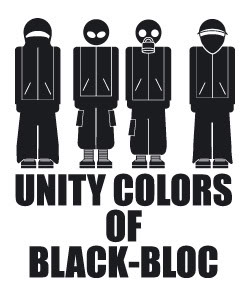 26 March saw several thousands of people from all backgrounds protest on the streets of London. Organised by The Trades Union Congress (TUC), many came from near and far to voice their disdain over the government’s manhandling of UK public services. With protesters ranging from students to pensioners, 26 March exhibited the kind of unity last seen in the anti-Iraq war march of 2003. People from all kinds of professional and political persuasions stood shoulder to shoulder to voice their anger and to, ‘March for the Alternative’.
26 March saw several thousands of people from all backgrounds protest on the streets of London. Organised by The Trades Union Congress (TUC), many came from near and far to voice their disdain over the government’s manhandling of UK public services. With protesters ranging from students to pensioners, 26 March exhibited the kind of unity last seen in the anti-Iraq war march of 2003. People from all kinds of professional and political persuasions stood shoulder to shoulder to voice their anger and to, ‘March for the Alternative’.
Deemed as an all-round success, no one can deny that the events in the day were mostly peaceful and paid tribute to the stella organisation skills of the TUC. However as the day moved on, a more aggressive form of ‘protest’ developed. We’ve all read about the backlash and many heard of the ammonia filled light bulbs that were thrown at the police.
As shocking as this was, this violent undertone of protest is unfortunately nothing new. There will always be a violent aspect to larger protests whether from a minority group of ‘protesters’ or the aggressive actions of the police, Ian Tomlinson being a fitting example among many others. People looking to cause trouble will always gate crash other people’s causes and use it as a platform to justify their own violent behaviour.
However can the same be said for the minority involved in the Black Bloc movement, a masked group who vandalised symbolic  property throughout the march? Their anonymous interview in the Guardian was telling. Far from the yobs and misfits the government would have us label them; they spoke articulately about their cause and motivations and were able to voice this to the mainstream media without sacrificing their anonymity. And for the group to do something seemingly spontaneous (although this is a bit too hard to believe) and still out-fox the police indicates that this required more than a black hoodie but actual brain power.
property throughout the march? Their anonymous interview in the Guardian was telling. Far from the yobs and misfits the government would have us label them; they spoke articulately about their cause and motivations and were able to voice this to the mainstream media without sacrificing their anonymity. And for the group to do something seemingly spontaneous (although this is a bit too hard to believe) and still out-fox the police indicates that this required more than a black hoodie but actual brain power.
As misguided was these actions were, they brought the demonstration and the nature protest to the top of the agenda. Granted, with up to an estimated 500 000 people protesting for such a topical and important cause; it was always going to attract media attention. But rightly or wrongly, to what extent would this have happened without the actions of these alternative movements such as the Black Bloc? Although for the most part the media was clear that the main demonstration was a success, the debate that lingered was over the nature of the violent protests. What does this say about our society when it is violence and damage that attracts more headlines? Do you remember the fire-fighter’s protest last September or the recent protests in Germany against nuclear power? These were peaceful protests that didn’t stay in the media spotlight for long, presumably because respectful people protesting in the streets en mass and then going home isn’t sexy media fodder.
Don’t get me wrong, I’m not about to don my balaclava (and in this weather?!) and hoist a paintball gun on my back. I saw the damage done to those shops and the fear these actions inflict on others who have nothing to do with the government. Despite the Black Bloc’s intention to, ‘send a message’ I couldn’t help wonder who they actually thought they were hurting. Something tells me that Phil Green isn’t about to roll up his sleeves and start scrubbing the paint off the walls of Topshop. It’s the underpaid worker that has to deal with it which only maintains the vertical structures we live in where the ‘poor’ cleans up after the mess of the rich. Continue reading











